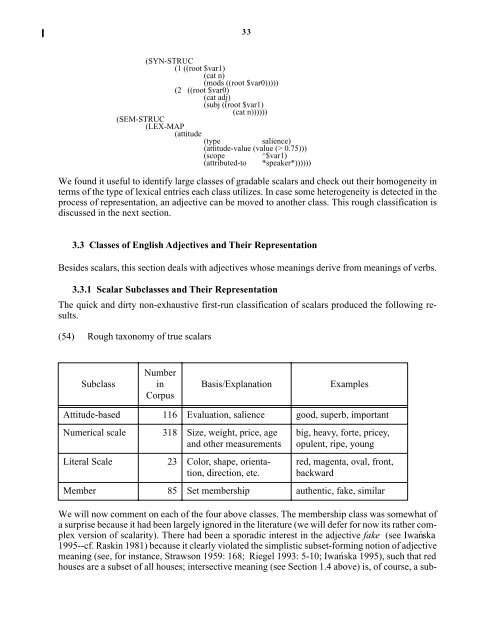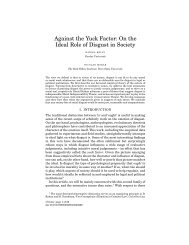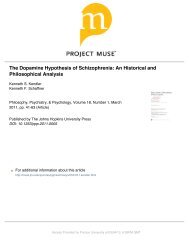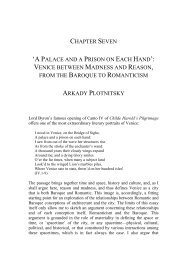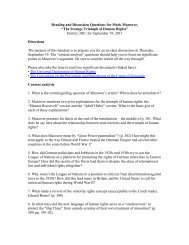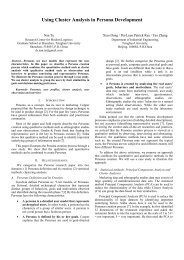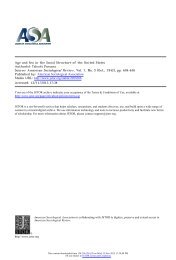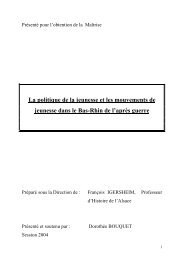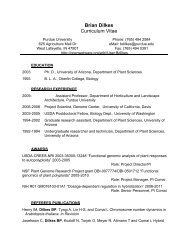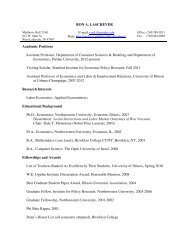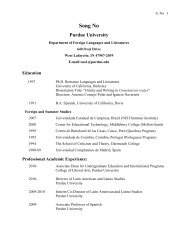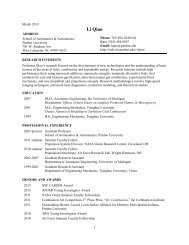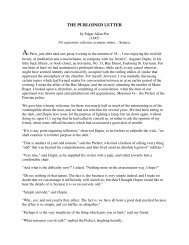Lexical Semantics of Adjectives - CiteSeerX
Lexical Semantics of Adjectives - CiteSeerX
Lexical Semantics of Adjectives - CiteSeerX
You also want an ePaper? Increase the reach of your titles
YUMPU automatically turns print PDFs into web optimized ePapers that Google loves.
33<br />
(SYN-STRUC<br />
(1 ((root $var1)<br />
(cat n)<br />
(mods ((root $var0)))))<br />
(2 ((root $var0)<br />
(cat adj)<br />
(subj ((root $var1)<br />
(cat n))))))<br />
(SEM-STRUC<br />
(LEX-MAP<br />
(attitude (type salience)<br />
(attitude-value (value (> 0.75)))<br />
(scope ^$var1)<br />
(attributed-to *speaker*))))))<br />
We found it useful to identify large classes <strong>of</strong> gradable scalars and check out their homogeneity in<br />
terms <strong>of</strong> the type <strong>of</strong> lexical entries each class utilizes. In case some heterogeneity is detected in the<br />
process <strong>of</strong> representation, an adjective can be moved to another class. This rough classification is<br />
discussed in the next section.<br />
3.3 Classes <strong>of</strong> English <strong>Adjectives</strong> and Their Representation<br />
Besides scalars, this section deals with adjectives whose meanings derive from meanings <strong>of</strong> verbs.<br />
3.3.1 Scalar Subclasses and Their Representation<br />
The quick and dirty non-exhaustive first-run classification <strong>of</strong> scalars produced the following results.<br />
(54) Rough taxonomy <strong>of</strong> true scalars<br />
Subclass<br />
Number<br />
in<br />
Corpus<br />
Basis/Explanation Examples<br />
Attitude-based 116 Evaluation, salience good, superb, important<br />
Numerical scale 318 Size, weight, price, age<br />
and other measurements<br />
Literal Scale 23 Color, shape, orientation,<br />
direction, etc.<br />
big, heavy, forte, pricey,<br />
opulent, ripe, young<br />
red, magenta, oval, front,<br />
backward<br />
Member 85 Set membership authentic, fake, similar<br />
We will now comment on each <strong>of</strong> the four above classes. The membership class was somewhat <strong>of</strong><br />
a surprise because it had been largely ignored in the literature (we will defer for now its rather complex<br />
version <strong>of</strong> scalarity). There had been a sporadic interest in the adjective fake (see Iwańska<br />
1995--cf. Raskin 1981) because it clearly violated the simplistic subset-forming notion <strong>of</strong> adjective<br />
meaning (see, for instance, Strawson 1959: 168; Riegel 1993: 5-10; Iwańska 1995), such that red<br />
houses are a subset <strong>of</strong> all houses; intersective meaning (see Section 1.4 above) is, <strong>of</strong> course, a sub-


